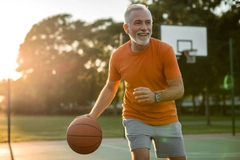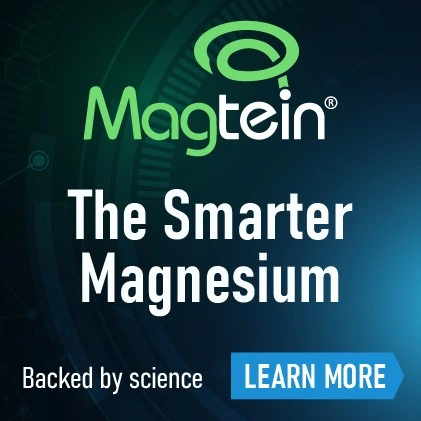Abbott gears glucose monitoring toward sports nutrition with “lab on arm” device
21 Sep 2020 --- Traditionally reserved for the diabetic sector, Abbott has reimagined glucose monitoring for the sports nutrition market with Libre Sense Glucose Sport Biosensor. It is designed for athletes to continuously measure glucose to better understand the correlation between their glucose levels and their athletic performance.
“Abbott’s Libre Sense Glucose Sport Biosensor acts like a lab on your arm, providing insights into what’s happening inside the body for more informed wellness decisions around nutrition and exercise,” Alesia Scott, an Abbott spokesperson, tells NutritionInsight.
The initial launch will occur in the coming weeks in Europe, including Germany, Austria, France, Italy, Switzerland, Luxembourg, UK and Ireland. “We aim to make the product available in other markets, pending local regulatory approval,” adds Scott.
“This is just the beginning – our breakthrough sensing technology has the potential to go beyond glucose and provide a lens into what’s happening in the human body. This could provide meaningful insights into other conditions, treatments and ultimately improve health,” adds Jared Watkin, senior vice president of diabetes care at Abbott.

Smartphone-activated biosensors
Athletes will wear the small round biosensor on the back of their upper arm to gain real-time glucose values. When the biosensor is applied, a 5 mm filament is inserted just under the skin and held in place with a small adhesive pad. It can be worn for up to 14 days and while bathing, showering, swimming or exercise.
Users activate the biosensor with a scan of their smartphones. They will automatically receive streaming glucose data via Bluetooth wireless technology. Abbott is working with sports technology companies for distribution, with the Biosensor being designed to be compatible with these companies’ mobile apps and other accessory devices.
Consumers over the age of 16 will be able to buy the biosensor over the counter. It can be used for performing sports such as cycling, running and swimming. When the biosensor is applied, a 5 mm filament is inserted just under the skin and held in place with a small adhesive pad.
Rethinking diabetes technology
The biosensor is based on Abbott’s FreeStyle Libre continuous glucose monitoring technology, which was originally developed for people living with diabetes. The wired-enzyme technology is based on over a decade of R&D from Abbott.
“Libre Sense is the first expanded offering of our glucose-sensing technology that allows for use beyond diabetes. We are exploring other analytes to make an even greater impact on people’s health,” says Scott.
Libre Sense is only intended for sports use and cannot diagnose, treat or manage diseases. While FreeStyle Libre measures glucose between 40 to 500 mg per dL, Libre Sense’s range is between 55 and 200 mg per dL.
Looking to further potential applications, Scott comments that Abbott is examining how the sensing technology can be used to open up life’s possibilities.
“We are working tirelessly to broaden the applications of our sensing technology, and are innovating so we can bring the benefits of this technology to more people,” she says.
Collaboration with Supersapiens
The first non-exclusive collaboration with a sports technology company is with Supersapiens, a US-based business focused on improving athletic performance, specifically to provide athletes with actionable and personalized insights on real-time biometric data, starting with glucose.
“By combining Abbott’s proven track record in glucose sensing technology along with Supersapiens’ app and personalized analytics, athletes will be primed to sustain peak performance,” says Phil Southerland, founder of Supersapiens and former professional cyclist.
Supersapiens has already partnered with some of the top teams at the Tour de France who are using the energy management system and have worn the Libre Sense biosensor in training as part of an observational trial.
Through this experience, the athletes were able to track their glucose data to help inform them of fueling strategies to prepare them for the race. Supersapiens has created an app for the biosensor to provide personalized analytics.
Supersapiens has created an app for the biosensor to provide personalized analytics.
The connection between nutrition and sports performance
According to Abbott, proper nutrition at the right intervals allows athletes to maintain a stable glucose level during endurance activities, which is important for managing overall energy and avoiding muscle fatigue.
Scott explains that endurance athletes must maintain adequate energy and hydration levels when undergoing training sessions. According to the American Sports College of Medicine, performing strenuous exercise over a long period of time without the required nutrition can lower blood sugar, which could impact athletic performance.
“We recognized there is a need for glucose-sensing technology for athletes to have a better understanding of how their glucose correlates with their training and athletic performance,” she adds.
She points to research showing that athletes doing endurance or sport activity benefit from tracking glucose levels to help them achieve optional performance.
Tracking and understanding glucose levels enables athletes to fuel appropriately through nutrition to avoid fatigue from low glucose and know when to replenish during training or competition to maintain peak performance.
This year has seen a host of releases harnessing technology for sports nutrition. In July, Dutch retailer Jumbo released a free app that is touted as a personal nutrition coach for cyclists. Meanwhile, UK-based Chelsea Digital Ventures, a digital business spun out of Chelsea Football Club, recently launched a personalized sports nutrition app called Blue Fuel.
By Katherine Durrell
















